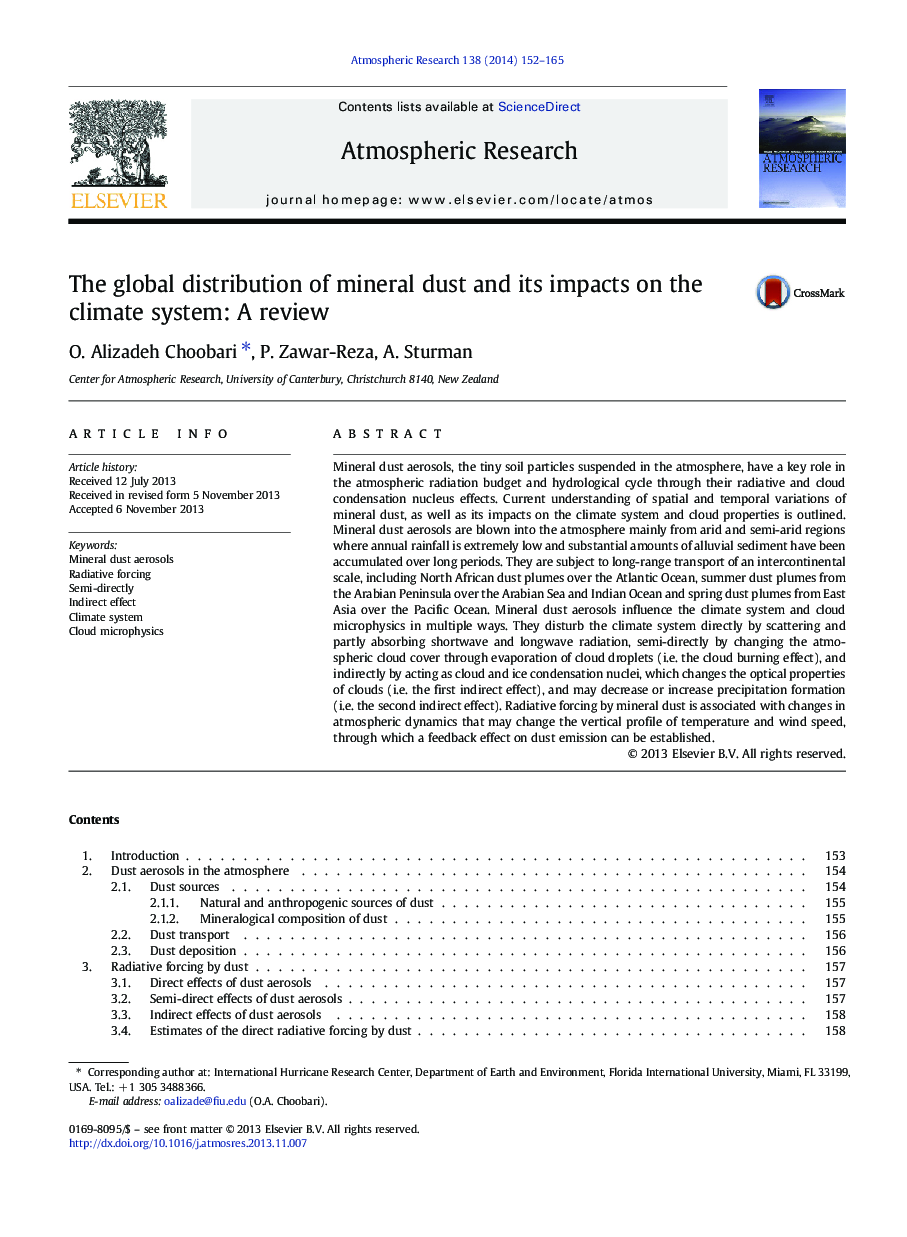| Article ID | Journal | Published Year | Pages | File Type |
|---|---|---|---|---|
| 6343632 | Atmospheric Research | 2014 | 14 Pages |
Abstract
Mineral dust aerosols, the tiny soil particles suspended in the atmosphere, have a key role in the atmospheric radiation budget and hydrological cycle through their radiative and cloud condensation nucleus effects. Current understanding of spatial and temporal variations of mineral dust, as well as its impacts on the climate system and cloud properties is outlined. Mineral dust aerosols are blown into the atmosphere mainly from arid and semi-arid regions where annual rainfall is extremely low and substantial amounts of alluvial sediment have been accumulated over long periods. They are subject to long-range transport of an intercontinental scale, including North African dust plumes over the Atlantic Ocean, summer dust plumes from the Arabian Peninsula over the Arabian Sea and Indian Ocean and spring dust plumes from East Asia over the Pacific Ocean. Mineral dust aerosols influence the climate system and cloud microphysics in multiple ways. They disturb the climate system directly by scattering and partly absorbing shortwave and longwave radiation, semi-directly by changing the atmospheric cloud cover through evaporation of cloud droplets (i.e. the cloud burning effect), and indirectly by acting as cloud and ice condensation nuclei, which changes the optical properties of clouds (i.e. the first indirect effect), and may decrease or increase precipitation formation (i.e. the second indirect effect). Radiative forcing by mineral dust is associated with changes in atmospheric dynamics that may change the vertical profile of temperature and wind speed, through which a feedback effect on dust emission can be established.
Related Topics
Physical Sciences and Engineering
Earth and Planetary Sciences
Atmospheric Science
Authors
O. Alizadeh Choobari, P. Zawar-Reza, A. Sturman,
